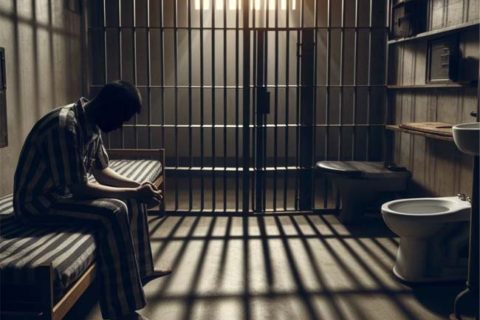Generally, rehabilitation programs are offered to the inmates who are incarcerated in prison or jail, as well as people who are supervised in the community by state parole agents or county probation officers. By the way, how many prisons offer rehabilitation programs? Well, let us discuss it here.
What is a Rehabilitation Program?
Before we discuss how many prisons offer rehabilitation programs, you should know what rehabilitation programs are. For your information, a rehabilitation program is a process in which an inmate is given an opportunity to realize her/his offense. Also, rehabilitation programs will give an inmate an opportunity to learn how she/he can change her/his mindset to prevent crime in the future.
Of course, rehabilitation is different from punishment. For your information, punishment only puts the inmate behind the bars of the cell so that she or he will think of her/his offense. The process of punishment is a hard way of making the inmates realize their mistakes, thus punishment may become counterproductive.

How Many Prisons Offer Rehabilitation Programs?
Now, you want to know how many prisons offer rehabilitation programs. Unfortunately, we cannot find the answer about that. There is no exact number how many prisons offer rehabilitation programs. However, surely there are many prisons that offer rehabilitation programs.
Each year, CDCR is budgeted for a number of slots in its rehabilitation programs. Slots are defined as the number of the inmates who could be enrolled for the full duration of the program in any given year. For instance, a six‑month long CBT program with 20 students equals 40 slots. Based on the research, the 2017‑2018 budget provides funding to support a total of 115,000 program slots. This does not include Arts‑in‑Corrections or Innovative Programming Grant programs that are not budgeted based on slots.
Apparently, the number of slots budgeted for in the current year is more than twice the number of slots budgeted for in 2015‑2016. This increase is mainly due to additional funding provided in 2016‑2017 to offer rehabilitation programs at all institutions rather than at only certain institutions. Almost half of the program slots in 2017‑2018 are for education‑related purposes.
State Funds Some In‑Prison Rehabilitation Programs
After admission to prison, CDCR will assess inmates’ rehabilitative needs and assign them to rehabilitation programs. For your information, the state funds 6 categories of in‑prison rehabilitation programs within CDCR. These programs are able to be operated by CDCR employees, governmental employees, private entities, or nonprofits.
Here are those categories:
- Academic Education
Academic education programs include General Education Development (GED) certification, adult basic education, the high school diploma program, and some college programs. State law needs the inmates with low literacy scores to attend adult basic education programs. - Career Technical Education (CTE)
Career Technical Education or CTE programs will give job training for various career sectors, including carpentry, masonry, and auto repair. - Cognitive Behavioral Therapy (CBT)
Cognitive Behavioral Therapy or CBT programs are designed to assist the inmates change the patterns of behavior which led to criminal activity. Particularly, these programs provide several forms of therapy to address rehabilitative needs such as criminal thinking and anger management, in which, if left unaddressed, will be able to increase the likelihood of recidivism. - Employment Preparation
Employment preparation programs will provide employment skills, such as job readiness and job search techniques, for the inmates up to six months prior to their release to help their transition back into society. - Substance Use Disorder Treatment (SUDT)
Substance Use Disorder Treatment or SUDT programs will focus on assisting the inmates treat their substance use disorders, avoid relapse, and reintegrate into society successfully. Unlike other rehabilitation programs that they usually attend on a voluntary basis, CDCR needs certain inmates who are caught using alcohol or illegal substances while in prison to attend the Substance Use Disorder Treatment (SUDT) programs. - Arts‑in‑Corrections
Arts‑in‑Corrections programs will focus on giving the inmates arts programs ranging from theatre to creative writing. - Innovative Programming Grants
Innovative Programming Grants will give limited‑term funding to support many volunteer‑run programs such as prison gardening programs and mentorship projects at prisons.
Rehabilitation is Better Than Punishment – Why?
Here are some reasons rehabilitations is better than punishment:
- Through rehabilitation programs, the re-entry of the inmate into society is easier. While punishment does not offer any assistance to the inmates.
- Mostly, the rehabilitation program is not being used on the adult inmates rather it’s being given to the Juvenile inmates. While punishment is mostly used for adult inmates.
- Rehabilitation has some different programs such as drug addict rehab programs, violent behavior rehab programs and many more. While punishments are not followed by a set program. The inmates are on their own to work on their problems. The ability to reintegrate into the society depends upon the individual’s efforts.
- Rehabilitation programs are less costly and more effective. While punishments are more costly. The amount of money spent on one inmate per year will be able to be up to $70.000.
Thus, this brings to the point that rehabilitation is better than punishment. Rehabilitation will assist an inmate become a good citizen and live a normal life. As a society, it is the responsibility of everyone to get rid of a broken person. One day, the criminal mindset in the society will be dangerous, so it is the responsibility of everyone to support rehabilitation programs so that the society can have fewer crimes and more peace. Through rehabilitation programs, it will ensure that the majority of the society is law abiding.
Also, rehabilitation is better because the rehabilitation program is specially designed with help from psychologists and criminologists. Those psychologists and criminologists will understand that punishment alone will not be able to eradicate crimes, thus they design the programs of rehabilitation according to the needs of each individual. Again, rehabilitation will make sure that the inmate learns from their own mistakes and becomes a reformed citizen. Rehabilitation has a wider objective. It aims to improve the overall situation of society by eliminating criminals.

A bookworm and researcher especially related to law and citizenship education. I spend time every day in front of the internet and the campus library.




